
The Toronto Transit Commission (TTC) is the public transport agency that operates bus, subway, streetcar, and paratransit services in Toronto, Ontario, Canada, some of which run into the Peel Region and York Region. It is the oldest and largest of the urban transit service providers in the Greater Toronto Area, with numerous connections to systems serving its surrounding municipalities.

The Toronto subway is a rapid transit system serving Toronto and the neighbouring city of Vaughan in Ontario, Canada, operated by the Toronto Transit Commission (TTC). It is a multimodal rail network consisting of three heavy-capacity rail lines operating predominantly underground, and one elevated medium-capacity rail line. As of December 2022, three new lines are under construction, two light rail lines and one light metro line.
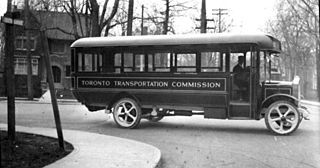
Toronto Transportation Commission (TTC) was the public transit operator in Toronto, Ontario, Canada, beginning in 1921. It operated buses, streetcars and the island ferries. The system was renamed the Toronto Transit Commission (TTC) in 1954.

The Toronto streetcar system is a network of nine streetcar routes in Toronto, Ontario, Canada, operated by the Toronto Transit Commission (TTC). It is the busiest light-rail system in North America. The network is concentrated primarily in Downtown Toronto and in proximity to the city's waterfront. Much of the streetcar route network dates from the 19th century. Most of Toronto's streetcar routes operate on street trackage shared with vehicular traffic, and streetcars stop on demand at frequent stops like buses.
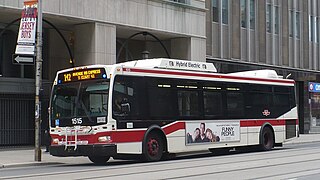
The Toronto Transit Commission (TTC) uses buses and other vehicles for public transportation. In 2018, the TTC bus system had 159 bus routes carrying over 264 million riders over 6,686 kilometres (4,154 mi) of routes with buses travelling 143 millionkilometres in the year. As of 2021, the TTC has 192 bus routes in operation, including 28 night bus routes. In 2022, the system had a ridership of 279,650,000, or about 1,014,600 per weekday as of the fourth quarter of 2022.
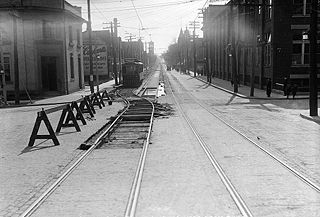
The history of public transportation in Toronto in Canada dates back to the middle 19th century under many different private companies, organizations and owners, which were all later unified as a single government-run entity during the 1920s.

The Urban Transportation Development Corporation Ltd. (UTDC) was a Crown corporation owned by the Government of Ontario, Canada. It was established in the 1970s as a way to enter what was then expected to be a burgeoning market in advanced light rail mass transit systems. UTDC built a respected team of engineers and project managers. It developed significant expertise in linear propulsion, steerable trucks and driverless system controls which were integrated into a transit system known as the Intermediate Capacity Transit System (ICTS). It was designed to provide service at rider levels between a traditional subway on the upper end and buses and streetcars on the lower, filling a niche aimed at suburbs that were otherwise expensive to service.

David L. Gunn is a transportation system administrator who has headed several significant railroads and transit systems in North America. He was director of operations of the Massachusetts Bay Transportation Authority (MBTA) from 1975 to 1979, general manager and chief operations officer of the Southeastern Pennsylvania Transportation Authority (SEPTA) from 1979 to 1984, president of the New York City Transit Authority from 1984 to 1990, the general manager at WMATA from 1991 to 1994, and chief general manager of the Toronto Transit Commission in Canada from 1995 to 1999. Gunn assumed the presidency of Amtrak on May 15, 2002, and held the position until political upheaval at the company in 2005. A dual citizen of the U.S. and Canada, Gunn retired to his family home on Cape Breton Island in Nova Scotia, Canada. He is currently associated with the Free Congress Foundation and the board of the Strait Area Transit Cooperative transit service in rural Richmond County, among other roles.
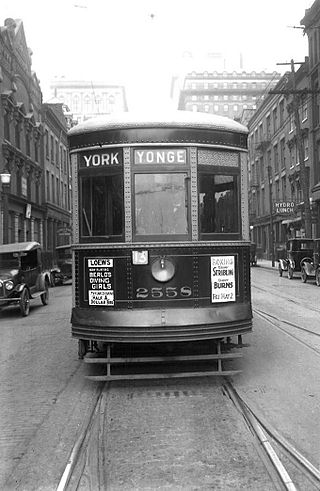
David William Harvey, B.A.Sc., M.E.I.C. was a Canadian engineer and transportation manager. He was a key player in the early development of the Toronto Transportation Commission and served as the transit operator's second General Manager, from 1924 until his death in 1938.
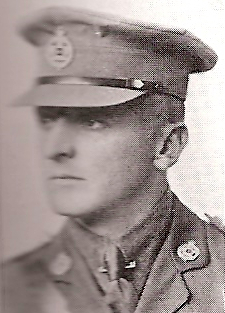
William Carson McBrien was a Canadian business owner and civic administrator. He was a long-serving chairman of the Toronto Transportation Commission and oversaw the construction of Canada's first underground rapid transit subway system in Toronto, Ontario.
Wilfred Eben Pinkerton Duncan was an important figure in the early period of the Toronto Transit Commission's history.
Henry C. Patten was General Manager of the Toronto Transportation Commission from 1939 until 1952.
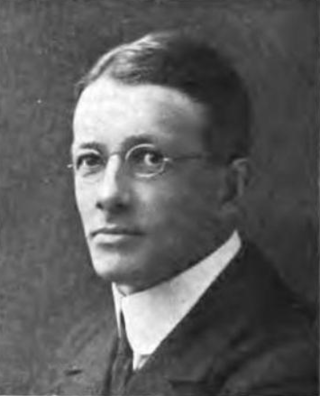
Sir Herbert Henry Couzens KBE was a British electrical engineering executive who managed public utilities in England, Canada, and Brazil.
Gary M. Webster is the former Chief General Manager of the Toronto Transit Commission in Toronto, Ontario, Canada.
John Gordon Inglis B.A.Sc. was a Canadian electrical engineer and transit manager.

Toronto Subway is a geometric sans-serif typeface designed for the original section of the Toronto Transit Commission’s Yonge subway. It is today used at station entrances, fare booths and track level signage throughout the system.
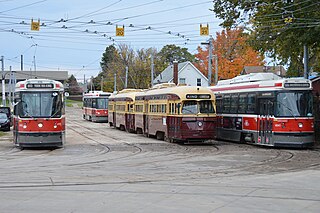
In 1921, the Toronto Transportation Commission (TTC) was created to integrate and operate the Toronto streetcar system. It inherited the infrastructure of two separate streetcar operators: the Toronto Railway Company (TRC) and Toronto Civic Railways (TCR). The TTC immediately embarked on a program to connect the TRC and TCR lines into one network. The TTC had to rebuild most of the track to provide a wider devilstrip so that the wider Peter Witt streetcars it was ordering could pass without sideswiping. Between 1938 and 1945, it placed five orders for air-electric PCC streetcars to replace the old, wooden streetcars of the TRC, and to address rising ridership. Between 1947 and 1951, the TTC placed three orders for all-electric PCC cars, with one order equipped with couplers for multiple-unit operation. Between 1950 and 1957, the TTC purchased PCCs from four American cities. By 1957, the TTC had more PCCs than any other city in North America. After the opening of the Bloor–Danforth subway in 1966, the TTC considered terminating all streetcar service in Toronto. However, in 1972, a citizens group led by Jane Jacobs and Steve Munro called "Streetcars for Toronto" persuaded the City to retain streetcar operation. This led to the development of the Canadian Light Rail Vehicle (CLRV) and its longer, articulated cousin, the Articulated Light Rail Vehicle (ALRV), to replace the aging PCC fleet. The Accessibility for Ontarians with Disabilities Act, 2005 (AODA) mandated that the next generation of streetcars be wheelchair-accessible. Thus, to replace the CLRVs and ALRVs, Bombardier adapted its low-floor Flexity Outlook model for the TTC to navigate the Toronto streetcar system's tight curves and single-point switches, characteristics set in the 1920s to accommodate Peter Witt streetcars.

Andy Byford is a British transport executive who has held several management-level positions in transport authorities around the world, such as the Toronto Transit Commission (TTC), New York City's Metropolitan Transportation Authority (MTA), Transport for London (TfL) and Sydney's then RailCorp.

Hillcrest Complex is the Toronto Transit Commission's largest facility and is responsible for most of the maintenance work on the system's surface vehicles, including heavy overhauls, repairs and repainting. It is located adjacent to the intersection of Bathurst Street and Davenport Road. The site is also home to the TTC's Transit Control Centre, but the operational headquarters of the organization remain at the McBrien Building at 1900 Yonge Street.
Richard J. Leary is an American and Canadian civil servant who has been the chief executive officer (CEO) of the Toronto Transit Commission (TTC) since 2017. Leary became interim CEO in 2017 following the departure of Andy Byford and took over the role permanently in 2018. Leary was previously general manager of York Region Transit and held senior roles with the Massachusetts Bay Transportation Authority (MBTA).














